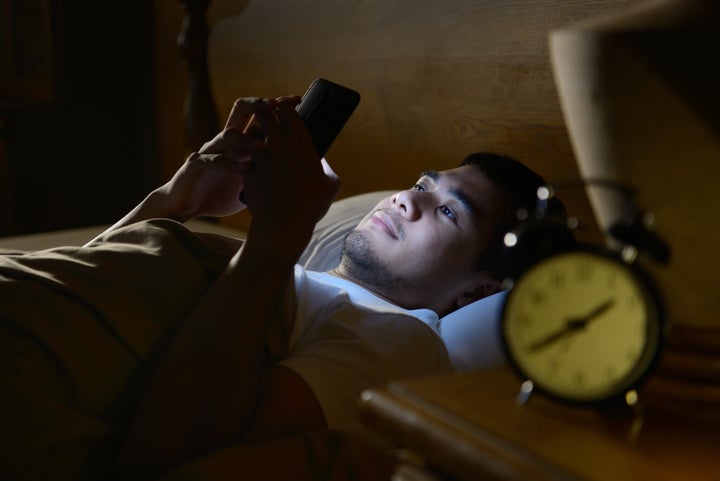If you feel like you have been swept into a torrent of under no circumstances-ending poor news about the coronavirus, you are not on your own. All over the globe, people are recognizing they are teetering on a wonderful line between being educated and slipping into media overload.
Every day delivers an influx of new details about COVID-19 — a lot more conditions, a new loss of life toll, non permanent morgues and new signs or symptoms. There are tragic stories from exhausted wellbeing care employees and families who experienced to say goodbye to loved kinds by way of a window. It can be tricky to search absent.
Now, people are beginning to feel the effects of getting inundated by COVID-relevant news. For a lot of, the stream of details has introduced on bouts of worry and panic. Some create bodily signs or symptoms, like lightheadedness, upper body tightness and sleeplessness, when others are experience really bummed out.
This arrives as no shock to psychological wellbeing industry experts. The media plays a large function in our all round properly-getting, and we know from past disasters that what we examine and check out on the web and on Tv can have a profound, lasting impression on our psychological and bodily wellbeing.
Here’s what transpires to the entire body and mind when we eat far too considerably coronavirus news:
Demanding news activates our fight-or-flight response

You may well recognize that immediately after looking through one far too a lot of article content about coronavirus your entire body begins to feel a bit off. Potentially your coronary heart races or your breath quickens. Probably you feel restless or jittery, expertise issues falling asleep at night, or have vivid nightmares.
This is mainly because when we’re exposed to a stressor ― even indirectly as we are by way of the media ― our fight-or-flight response turns on, which is our body’s way of dealing with a perceived danger.
Past proof demonstrates that “when the mind is revealed photographs of one thing possibly traumatic, the facilities of the mind that are accountable for worry response light-weight up [and] the facilities of mind that are relevant to the progress of PTSD light-weight up,” stated Alison Holman, a psychologist and affiliate professor of nursing at the College of California Irvine.
When people continually expose themselves to panic-inducing news, they are generating their mind perceive a threatening, demanding occasion over and over. Unnecessary to say, this can take a main toll on wellbeing over time.
“If you are frequently exposed to that stressor, it can lead to a depressed mood, it can lead to sleeplessness, fatigue [and] a decrease in concentration,” stated Collin Reiff, a psychiatrist at NYU Langone Well being.
Holman, who has analyzed the media’s function in past disasters and epidemics, stated that the a lot more people interact with large-anxiety media, the a lot more likely they are to report increased stages of acute anxiety and panic.
This phenomenon has been properly documented over time. With the 2014 Ebola disaster, for instance, people who eaten a lot more media about the outbreak knowledgeable increased stages of distress and stress than those people who seen much less Ebola-relevant news.
The identical goes with other disasters. A report searching at 9/11 uncovered that people who seen various hrs of Tv a day experienced a increased threat of publish-traumatic anxiety signs or symptoms and new bodily wellbeing problems, predominantly with the coronary heart, in the decades that followed. Research on the Boston Marathon bombings showed that acute anxiety signs or symptoms were being best among the people who eaten the most news, even as opposed with people who actually witnessed the bombings.
According to Holman, what people see matters just as considerably as how considerably news they check out. Her analysis on the Boston Marathon bombings found that the a lot more grotesque and graphic the coverage, the a lot more distress and impaired performing people knowledgeable.
We can get trapped in a vicious cycle of news usage, major to psychological and bodily wellbeing troubles like sleeplessness
Throughout moments of uncertainty and instability, people change to the news for reassurance and assistance, in accordance to a report published in March by the American Psychological Association. But when details is ineffectively communicated — due to the sensationalization of what’s going on or misinformation— people’s panic and perceptions of threat can immediately enhance.
This can entice people in a vicious cycle, stated Yuval Neria, a professor of medical psychology at Columbia College and the director of trauma and publish traumatic anxiety problem at the New York State Psychiatric Institute.
“Du
ring the ongoing publicity to this promptly spread, lethal outbreak, we often feel nervous and then change to social and digital media,” Neria stated. “High publicity to the media may well in change make us even a lot more nervous and distressed, which in change will intensify social media usage.” It can immediately start off to feel like doomsday.
More than time, surplus publicity to demanding media can lead to serious panic, despair and sleeplessness. It can also bring about a range of bodily wellbeing problems, like coronary heart disease, diabetic issues, early growing old and suicidal threat, in accordance to Neria.
The pandemic is chronically unfolding, which exacerbates troubles

Holman, who is looking into how coronavirus news is impacting people’s wellbeing, stated what’s significantly concerning is how incessant and multifaceted the news is.
The coronavirus isn’t a standalone occasion. It is an unfolding disaster that’s triggering secondary stressors — the expanding amount of new conditions and fatalities, the spike in unemployment, a risky stock marketplace, and political turmoil.
“What’s happening, I think, is people are getting exposed to new details, considerably of which is panic-provoking, over and over and over once more,” Holman stated.
When you combine that regular publicity and a 24/seven output of new details that’s not at all optimistic, it can really use on people, Holman additional.
How considerably news ought to you examine?
However each individual person’s threshold may differ, Holman advised picking one or two news sources that are reputable and highly regarded. Search for a supply that will give you the info and not test to scare you.
Then, established some boundaries. Holman advised checking in a few moments a day, at most.
“Get the details you will need and never maintain going again to it,” Holman stated. Contemplating how grotesque written content can have a larger impression on psychological wellbeing, test to skip upsetting photographs.
Eventually, Reiff stated it is essential to concentration on the info and maintain in head that the news usually addresses adverse events ― like the amount of fatalities and new conditions ― and not the optimistic results, these as how a lot of people are recovering and getting released from hospitals (which is actually really a large amount!).
If people are adhering to wellbeing tips — working towards very good cleanliness, being at house and social distancing — then they are carrying out their part to aid guard themselves and others from COVID-19. Even if they do deal the virus, Reiff additional, there’s a incredibly smaller prospect it’ll wind up getting deadly. Just maintain these factors in point of view when you start off to go down a poor imagined spiral.
A HuffPost Manual To Coronavirus
